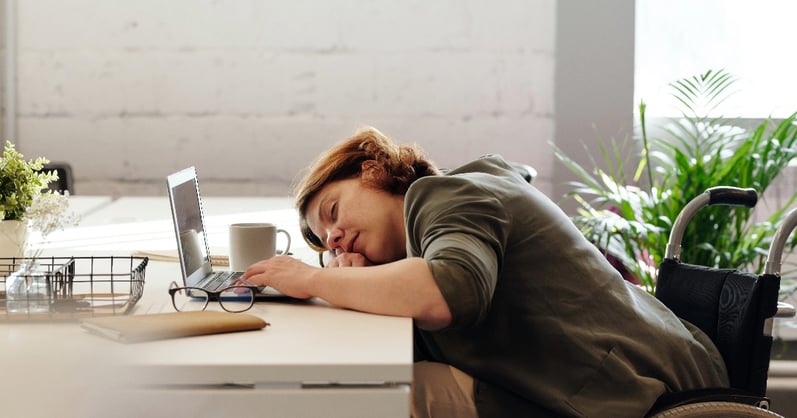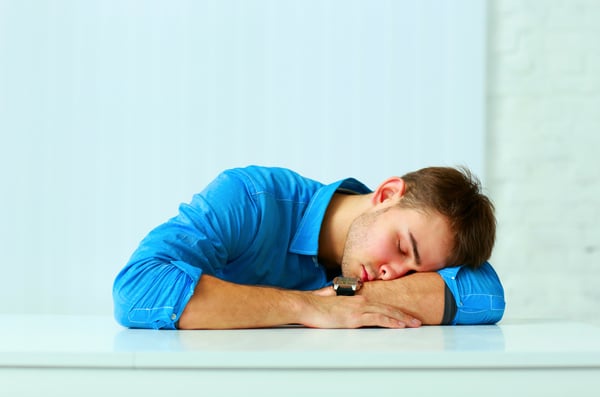CBT-I: The Best Treatment for Chronic Insomnia
Published on: September 10, 2023 | Reading time: 🕐 3m

When you think of treatment options for insomnia, do terms like sleeping pills or sleep hygiene come to mind? Although sleeping pills can be useful for fast-acting and short-term treatment in some individuals, using them over the long term can lead to several problems. These include the development of tolerance, negative side effects, and a worsening of insomnia when sleeping pills are suddenly stopped. Good sleep hygiene—a set of behavioural and environmental practices that promote better sleep—is simply not enough to reverse insomnia. Rather, the best treatment for insomnia goes by the acronym CBT-I, short for cognitive-behavioural therapy for insomnia.
Decades of research have shown that CBT-I significantly improves insomnia symptoms. It helps people fall asleep more quickly, return to sleep more easily, and improves sleep efficiency—a measure of how consolidated a person’s sleep is. Compared to medications, CBT-I consistently comes out on top. Therefore, CBT-I is the recommended first-line treatment for insomnia in medical guidelines around the world.
The benefits of CBT-I have been observed in adults of all ages, including those who are struggling with a co-occurring mental or physical health problem. This structured type of therapy will teach you how to make behavioural changes to promote good sleep and how to address thoughts that interfere with sleep. Combined, these methods allow the biological processes of sleep regulation to function optimally. Let’s take a closer look at what CBT-I involves.
The key ingredients of CBT-I
The most essential components of CBT-I include having a regular rise time and bedtime, restricting time in bed, and getting out of bed when not sleeping. A consistent sleep schedule is the most effective way to reset your circadian rhythm. This rhythm is one of two biological processes that regulate your sleep. It determines when you feel sleepy and when you feel alert, but it often gets out of sync in the context of insomnia.
Restricting time in bed acts on the other biological process—the homeostatic sleep drive. By restricting time in bed (i.e., setting a later-than-usual bedtime), you will build up your sleep drive so that when you go to sleep, you fall asleep more readily and stay asleep. This helps consolidate sleep into longer and more restorative stretches.
Finally, getting out of bed when not sleeping helps form a strong link between our sleeping environment and sleep. People with insomnia tend to associate their bed or bedroom with being awake, hyperaroused, or frustrated, and with other activities that they do in bed when unable to sleep. Modifying this association by reserving your bed for only sleep or sexual activity helps promote a more rapid onset of sleep.
A few extra components
Methods to deal with thoughts that may interfere with sleep (e.g., racing thoughts, distorted thoughts) and to relax the body and mind in preparation for sleep are also part of CBT-I. Throughout therapy, sleep diaries are used to track your daily sleep patterns. Data from these sleep diaries are very important as they allow your therapist to tailor CBT-I to you. For example, your personalized “sleep window” (bedtime and rise time) will be adjusted on a week-to-week basis, depending on the result from the sleep diary.
The lasting benefits of CBT-I
If you are reading this and thinking that CBT-I sounds like much more effort than simply taking a sleeping pill, you are correct. Like all therapy, CBT-I requires time, motivation, and a willingness to trust in the process. Nevertheless, once you learn the techniques of CBT-I, you will have this knowledge for years to come. This will empower you to maintain your sleep gains following the end of therapy and know what to do should sleep difficulties reappear down the road. This is why, in addition to being the most powerful way to reverse insomnia, CBT-I has also been shown to provide the longest-lasting effects.
Read more: Ditch the Digital Devices
Need help with your sleep?
We can help you! HALEO offers a solution that can contribute to productivity and well-being through quality sleep. Schedule a discovery meeting by booking your time here.




